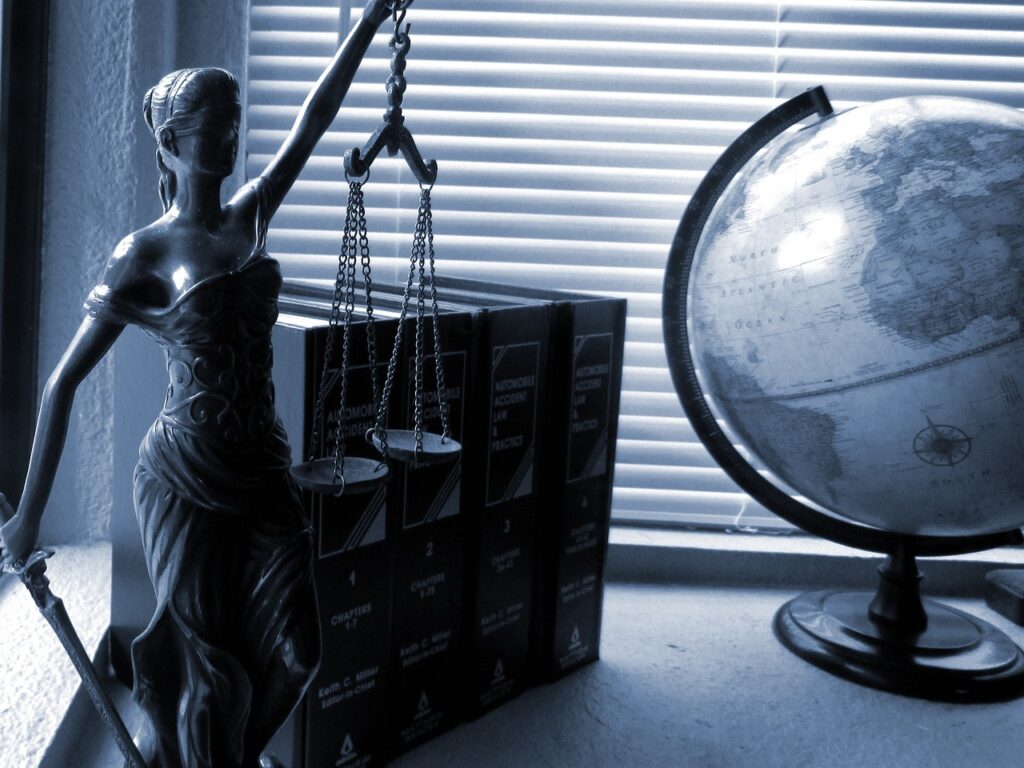Published On: September 26th 2025
Authored By: Yashika Kaushik
Aamna Law College, CCSU affiliated
Introduction
State of Orissa v. Ram Bahadur Thapa is a landmark judgment in Indian criminal law that intricately analyzes the defense of mistake of fact under Section 79 of the Indian Penal Code (IPC). The case stands out for its consideration of bona fide belief, superstitious influences, and the standards of good faith required to excuse criminal liability, particularly relating to homicide. The decision of the Orissa High Court in 1959 delved into whether acting under a mistaken belief, prompted by superstitions and absence of due care, could afford protection from penal consequences under the IPC.
Facts of the case
- The incident occurred in Rasgovindpur, a village in the then district of Balasore, Orissa, where there was an abandoned aerodrome used by defense authorities to store valuable scrap materials. Given the value of the scrap, two chowkidars (guards), Dibakar and Govind, were posted to guard it1.
- The region was home to several Adivasi communities, especially Santals and Majhis, who believed in rampant spirits and presumed the aerodrome was haunted. This belief had gripped the village, making the footpaths across the aerodrome largely deserted at night12.
The Individuals
- Jagat Bandhu Chatterji, a businessman from Calcutta intending to purchase scrap, arrived at Rasgovindpur, accompanied by his Nepali servant, Ram Bahadur Thapa (the respondent)13.
- They stayed at the tea stall run by Krishna Chandra Patro, a local, who became involved in the nocturnal events1.
The Incident
- On 20 May 1958, Chandra Majhi, fearing ghosts, sought shelter at Patro’s tea stall12.
- Spurred by curiosity and perhaps bravado, Thapa, Chatterji, and Patro went searching for ghosts, joined by Chandra Majhi as their guide41.
- Around midnight, while returning through the aerodrome, the group observed flickering lights and, with strong winds, perceived ghost-like figures moving about2.
- Convinced that supernatural entities were present, Thapa—armed with a khurki (a sharp weapon)—attacked, resulting in the death of Gelhi Majhiani and severe injuries to Saunri and Ganga Majhiani, with minor injuries to Patro himself412.
- It later emerged that the so-called ghosts were actually Adivasi women searching for jewelry they had dropped earlier that day21.
Legal Issues
Several central issues were considered by the courts:
- Whether the respondent, Ram Bahadur Thapa, should be held criminally liable for murder and causing hurt under Sections 302, 326, and 324 of the IPC, given his belief that he was attacking ghosts56.
- Whether the defense of mistake of fact under Section 79 IPC was justifiably invoked in Thapa’s case, thereby excusing him from criminal liability78.
- What constitutes ‘good faith’ and ‘due care and attention’ as prerequisites for the successful application of this legal exception74.
Legal Provisions Involved
- Section 302 IPC: Punishment for murder.
- Section 326 IPC: Voluntarily causing grievous hurt by dangerous weapons.
- Section 324 IPC: Voluntarily causing hurt by dangerous weapons.
- Section 79 IPC: Acts done by a person justified, or by mistake of fact believing himself justified, by law.
- Section 52 IPC: Definition of good faith—due care and attention is required78.
Proceedings and Arguments
Trial Court
- The Sessions Judge of Mayurbhanj acquitted Thapa, exempting him from criminal liability based on Section 79 IPC, reasoning that Thapa genuinely believed, in good faith, that he was attacking ghosts—not human beings9.
- The judge emphasized that ignorance of fact (ignorantia facti) is a valid excuse, as per Sections 76 and 79 IPC, but ignorance of law is not7.
Appeal by State
- The State of Orissa challenged the acquittal. The main contention was that Thapa failed to exercise due care and attention, a requirement for acting ‘in good faith’ as per Section 52 IPC543.
- The State argued that Thapa’s belief in ghosts, though sincere, was a product of superstition and did not exonerate him of negligence or wanton disregard for human life3.
Defense’s Position
- Thapa’s plea rested on actual but mistaken belief, influenced by widespread local superstitions. He believed that he was acting to defend himself and others from supernatural harm, not realizing he was attacking innocent people3.
Judgement
Orissa High Court Ruling
- The Orissa High Court, consisting of Chief Justice R. Narasimham and Justice S. Barman, upheld the acquittal of Thapa, confirming that Section 79 IPC applied under the facts of the case968.
- The High Court analyzed the mental state of Thapa, holding that his actions were indeed under a bona fide mistake—he genuinely believed he was attacking ghosts, not people.
- The Court found that under the particular circumstances—given the omnipresent superstitions and the prevailing hysteria—Thapa’s actions were shielded by the law as a ‘mistake of fact.’748
“…the respondent acted in the honest and genuine belief, though mistaken, that he was attacking ghosts and not human beings and had no knowledge that the objects of his attack were, in fact, human beings.”
- The Court cautioned, however, that this defense should not be abused. While the defense of good faith mistake in fact is allowed, it must be assessed strictly within the factual context, and such immunity is not available to those who act recklessly or with utter indifference to the consequences483.
Analysis
Good Faith and Mistake of Fact
- The case illuminates the delicate boundary between genuine, reasonable mistakes and negligent or reckless acts disguised as mistakes of fact.
- Section 79 IPC provides immunity for acts committed under a bona fide mistake, but the term “good faith” is not a catch-all and requires demonstration of “due care and attention.” This standard is inherently subjective—what may constitute good faith for one person may not suffice for another in different circumstances7483.
- The facts indicated a unique scenario: the whole village genuinely believed in ghosts, and Thapa acted under the influence of collective fear. Nevertheless, the outcome would likely have been different had Thapa not demonstrated belief in good faith, or had he acted without even attempting to ascertain the nature of the figures before attacking41.
Observations on Due Care
- One of the points critiqued by legal analysts is whether more should have been expected from Thapa in terms of verifying the situation before using lethal force543.
- The verdict underlines that in similar cases, mere subjective belief is not enough; reasonable care must be evident, and gross negligence cannot be cloaked as “mistake of fact.”43
Impact and Significance
Precedential Value
- Doctrine of Mistake of Fact: This judgment stands as a pivotal authority on the interpretation of mistake of fact in Indian criminal jurisprudence, clarifying that good faith must be based on both actual belief and some degree of reasonableness appropriate to the circumstances78.
- Superstition and Criminal Law: The case raises critical questions about the intersection of superstition, subjective beliefs, and criminal responsibility. While the law does not recognize supernatural entities, it acknowledges that mistaken human beliefs—if acted upon sincerely and with care—might shield from criminal liability73.
- Role of Good Faith: The requirement of due care and attention is reaffirmed. In deciding “good faith,” the courts will scrutinize not just the genuineness, but the rationality and reasonableness of the belief given the context7483.
Critique and Continuing Relevance
- The case demonstrates the challenge courts face in balancing collective social beliefs and legal reasonableness.
- Subsequent cases and academic commentary have debated whether the “good faith” standard applied here might promote subjectivism at the cost of legal certainty, especially where widespread but irrational beliefs are involved83.
- It underscores the continuing need for judicial caution; if such defences are accepted too readily, there is potential for misuse in cases founded on fear, rumor, or prejudice43.
Conclusion
State of Orissa v. Ram Bahadur Thapa remains a crucial authority on the scope and application of mistake of fact under Indian law. The court’s nuanced approach recognizes that criminal liability should not attach to genuinely mistaken acts committed in good faith, but also establishes necessary caution against the reckless use of such defenses. The balance between individual understanding, cultural context, and legal standards of reasonableness continues to make this case relevant for questions of criminal liability rooted in subjective or superstitious beliefs.
- Reaffirmation of Subjective vs. Objective Standards
The case underlines the delicate balance between an individual’s subjective belief and the objective legal standard. While Thapa’s actions were guided by a personal conviction influenced by local superstitions, the court’s reliance on his bona fide belief—tested against prevailing conditions—demonstrates an openness to cultural and social context. However, this also highlights the challenges in uniformly applying reasonableness when local customs or fears diverge from national or rational expectations.
- Limitation and Scope of Legal Immunity
This decision shows that immunity under Section 79 IPC is not unlimited. The court set a precedent by cautioning that this legal shelter cannot be a sanctuary for those who recklessly or negligently harm others, even if they claim to have acted under a mistaken belief. The conclusion is clear: the mistaken belief must be genuine, but also informed by due care, a standard that should deter misuse of the defense in less extraordinary settings.
- Socio-Legal Commentary on Superstition
By excusing Thapa, the judgment inadvertently reflects the tension between law and superstition. It implicitly acknowledges the profound effect community beliefs may have on conduct, especially in rural or less-educated settings. The legal system’s willingness to account for deeply ingrained superstitions as a mitigating factor reflects a blend of pragmatism and empathy, but also alerts future courts to be wary of over-accommodation, which could undermine legal certainty.
- Evolution in Interpretation of “Good Faith”
The case advanced the discussion on what constitutes “good faith.” Rather than a wholly subjective test, the court suggested an evolving, socially-grounded standard—one not rigidly confined to personal belief but also considering expected rational inquiry under the circumstances faced by the accused. This development adds nuance to the concept, guiding future applications in both criminal and civil contexts.
- Impact on Future Defenses of Mistake of Fact
This judgment serves as both a shield and a warning. While it offers a defense to those genuinely mistaken under extraordinary circumstances, it also signals that such defenses will be strictly scrutinized to prevent misuse. The ripple effect ensures courts must distinguish genuine errors from mere pretexts, reinforcing the importance of judicial vigilance.
- Reinforcement of the Principle: Ignorance of Law vs. Fact
Lastly, the case reinforces a foundational legal principle: ignorance of law is no excuse, but ignorance of fact—if genuine and reasonable—can be. This remains a key tenet in maintaining both legal clarity and fairness, especially in situations where facts, rather than laws, are in doubt.
References:
- ‘State of Orissa v. Ram Bahadur Thapa AIR 1960 Ori 161’9713.
- Paul S and Sahoo S, ‘Case Summary: State of Orissa v. Ram Bahadur Thapa’ (2021) Aequivic Law Blog7.
- ‘State of Orissa v/s Ram Bahadur Thapa’ LawBhoomi (2023)5.
- ‘STATE OF ORISSA v. RAM BAHADUR THAPA – Legal-lore’ (2022)6.
- ‘State of Orissa vs Ram Bahadur Thapa on 9 November’, Scribd (2025)4.
- JudicateMe, ‘State of Orissa v. Ram Bahadur Thapa’ (n.d)1.
- StrictlyLegal, ‘State of Orissa v. Ram Bahadur Thapa: Case Analysis’ (2021)8.
- Scribd, ‘State of Orissa Vs Ram Bahadur Thapa’ (2025)2.
- Legal Vidhiya, ‘State of Orissa Vs Ram Bahadur Thapa AIR 1960 Ori 161’ (n.d)10.
- Naya Legal, ‘State of Orissa v. Ram Bahadur Thapa (1959)’ (2024)3.
- https://judicateme.com/wp-content/uploads/2020/06/State-Of-Orissa-v.-Ram-Bahadur-Thapa.pdf
- https://www.scribd.com/document/736784975/State-of-Orissa-Vs-Ram-Bahadur-Thapa
- https://www.nayalegal.com/state-of-orissa-v-ram-bahadur-thapa-1959
- https://www.scribd.com/document/628040100/State-of-Orissa-vs-Ram-Bahadur-Thapa-on-9-November
- https://lawbhoomi.com/state-of-orissa-v-s-ram-bahadur-thapa/
- https://www.legallore.info/post/state-of-orissa-v-ram-bahadur-thapa
- https://www.aequivic.in/post/case-summary-state-of-orissa-v-ram-bahadur-thapa
- https://strictlylegal.in/state-of-orissa-v-ram-bahadur-thapa-case-analysis/
- https://indiankanoon.org/doc/1489567/
- https://legalvidhiya.com/state-of-orissa-vs-ram-bahadur-thapa-air-1960-ori-161-1960-cri-lj-1349/
- https://www.legalserviceindia.com/legal/article-5852-case-analysis-state-of-orissa-vs-ram-bahadur-thapa.html
- https://www.youtube.com/watch?v=P4cH3HcS30w
- https://orissahighcourt.nic.in/uploads/vernacular_judgements/sc_judgements/Petition%20286_1955_e.pdf
- https://www.youtube.com/watch?v=qC0vvJIPzJo
- https://ijalr.in/volume-1/issue-3-2/state-of-orissa-v-s-ram-bahadur-thapa-by-alika-priya/
- https://thelegallock.com/case-brief-state-of-orissa-v-ram-bahadur-thapa-air-1960-orissa-161/
- https://aishwaryasandeep.in/state-of-orissa-vs-ram-bahadur-thapa/
- https://www.juscorpus.com/wp-content/uploads/2022/05/162.-Nissy-Elizabeth-James.pdf
- https://www.casemine.com/judgement/in/56098835e4b014971137d458
- https://edurev.in/t/336291/Case-Brief-State-of-Orissa-v–Ram-Bahadur-Thapa




